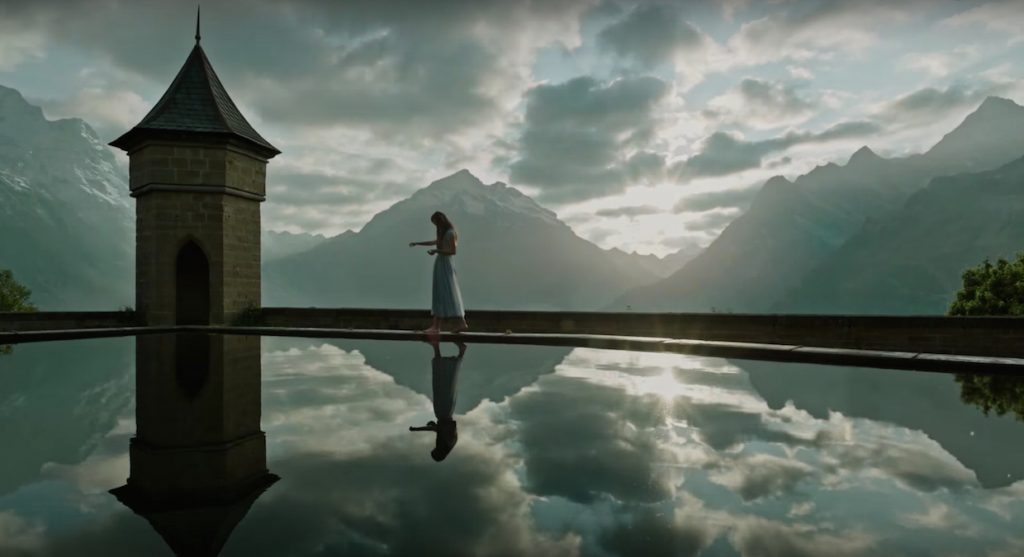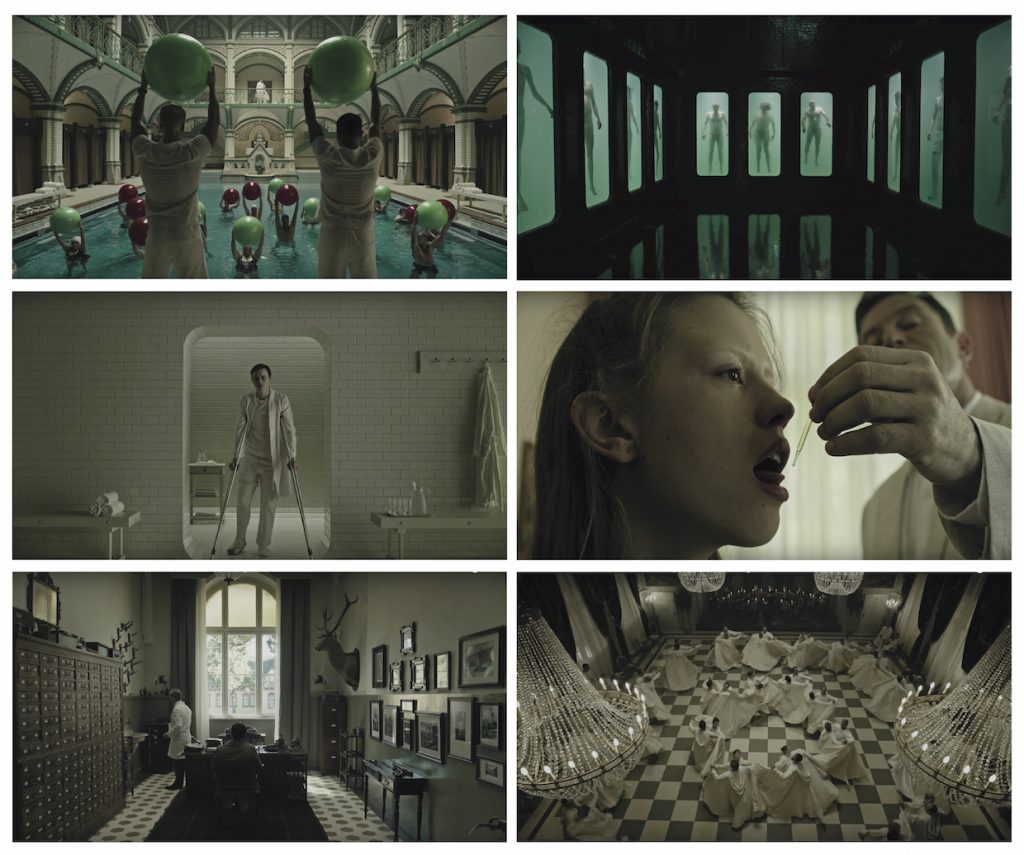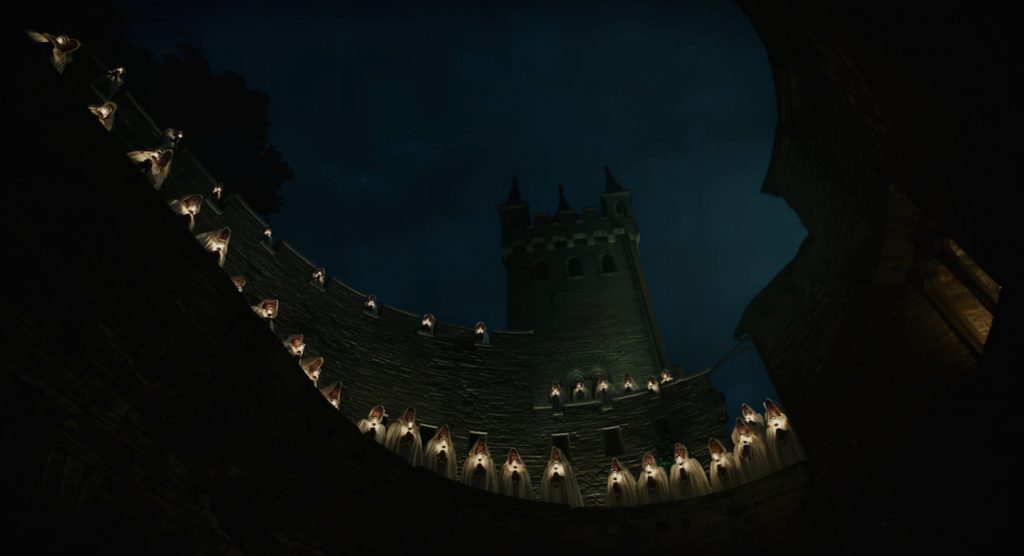 Back to selection
Back to selection
“Hitler Was Treated There”: DP Bojan Bazelli on A Cure for Wellness, Alexa XT Studios and Abel Ferrara

Cinematographers right out of film school often get their feet wet by shooting short films, music videos, and commercials – brief subjects with lower budgets and ample room to experiment and make mistakes. There was no such toe dipping for Bojan Bazelli. He was dunked directly into the river of cinema and legendary New York auteur Abel Ferrara did the baptizing. The Yugoslavia-born Bazelli was just out of film school in Prague when Ferrara came across the DP’s thesis movie and tapped him to shoot his Romeo and Juliet variation China Girl (1987). Over the next decade Bazelli lensed 17 features, including the Stan Winston monster movie Pumpkinhead, Bill Duke’s underrated Deep Cover, and Ferrara’s King of New York and Body Snatchers.
Bazelli didn’t shoot his first commercial until after those 17 features, but once he entered the corporate world he spent much of the end of the 1990s eschewing movies for the comforts of advertising. It was director Gore Verbinski who lured Bazelli back into the realm of features with 2002’s The Ring and the tandem is back together again for the new Gothic flavored horror A Cure for Wellness. A rare decently budgeted, opulently mounted studio fright flick – think Scorsese’s Shutter Island or del Toro’s Crimson Peak – A Cure for Wellness finds an ambitious, ethically challenged junior member of a New York financial services firm (played by Dane DeHaan) dispatched to a remote “wellness center” in the Swiss Alps to retrieve the company’s AWOL CEO.
The film has been a non-starter at the box office and the 2 ½ hour runtime is a big ask, but I appreciated the movie’s fever-dream lunacy as well as Bazelli’s striking compositions. With A Cure for Wellness still in theaters, the cinematographer spoke to Filmmaker about his preference for the Studio version of the Alexa, the stylistic carryover from Pete’s Dragon, and shooting on location at a hospital whose history includes Hitler and a serial killer.
Filmmaker: Before A Cure for Wellness the last four movies listed in your credits are a pair of musicals (Rock of Ages and Burlesque), a big budget western (The Lone Ranger), and a PG rated family film (Pete’s Dragon). Is that diversity appealing to you?
Bazelli: I’m interested in a variety of things and I always try to choose projects that are polar opposites. That’s how you go from doing a couple of musicals to a cowboy movie. So I went from Burlesque with its peach and purple colors and dancing to the desert with horses and cowboys chewing tobacco. (laughs)
Filmmaker: Pete’s Dragon was by no means a low budget movie, but it was shot using a great deal of natural light and with a fairly small footprint in terms of equipment. Does an experience like that bleed over to your next project?
Bazelli: Pete’s Dragon wrapped on a Friday and [the following] Monday I started A Cure for Wellness. So they were literally back-to-back. And yes, you do sometimes try something on a film and it works and you carry that technique on to the next project even if it’s a totally different type of film. On Pete’s Dragon our exteriors were fully natural light to the point where we never carried any lights with us for exteriors. That desire to use the natural beauty of the location trickled down to A Cure for Wellness and we shot pretty much everything that was exteriors — including the early scenes of (Dane DeHaan) traveling to the sanitarium — with available light.
Filmmaker: Did you use the Arri Alexa again like on Pete’s Dragon?
Bazelli: Yes. When the Alexa came out it was the reason I switched to digital, but even before that, when I was shooting film, I was always an Arri guy for cameras and lenses. For A Cure for Wellness we used the Alexa XT. We used the Studio version of the Alexa because it has a rotating mirror shutter instead of a digital shutter. It gets you a little closer to film in terms of the strobing. Some people would argue it’s almost imperceptible and that you’ll never see the difference, but I do. The Studios aren’t used as often as [the base model Alexas] because they’re a little heavier and people like to use small cameras, but that shutter is the reason I prefer it. So our main package was two XT Studios and our third camera was the Alexa M for when we needed something smaller. The M is the one with the umbilical connection to a recorder, but I think the era for that camera is over now. The Alexa Mini has taken its place.
Filmmaker: What was your lens package?
Bazelli: I used the Leica Summilux lenses. We shot in Open Gate mode and the Leicas were one of the few lenses that were able to cover [the entire sensor in that mode]. When you use Open Gate the chip gets bigger by 30 percent. Because you’re using a bigger sensor the lenses react in a different way — for example, a 25mm lens becomes wider. So in order to get the same size shot you have to move maybe 10 inches closer and that helps create a greater fall off in depth of field. That fall off helped us call attention to certain things in the frame, but it’s also very difficult for focus pullers to deal with because the depth of field is very shallow. But I think the results are great. We did use some Zeiss lenses for the underwater sequences. The rental house that provided us with our underwater equipment in Germany only had housings that fit those lenses.
(Above) A pair of German locations were used to create A Cure for Wellness’ Swiss sanitarium exterior – Hohenzollern Castle (left) and Beelitz (right). [Click to expand all photos.]
Filmmaker: The locations for the exteriors are pretty incredible. Tell me about some of the places you shot to create the film’s sanitarium.
Bazelli: Two places double as the sanitarium’s exterior in the Swiss Alps – Hohenzollern Castle and another place in Germany called Beelitz, which used to be a hospital. We combined them to get this Gothic feeling that we wanted, which we weren’t able to find in a singe location. That presented a little bit of trouble in matching the light and finding the angles that blended the locations into one.
Filmmaker: Did you do any practical interiors at either place?
Bazelli: Beelitz was actually the location that we shot most of our interiors in. Outside of a few corridors that were built on stage – we couldn’t find any as long as we needed – 90 percent of the interiors were shot at the real location. It was really a spooky place and you felt very uneasy there. Hitler was treated there during World War I as a soldier. The Russians used it as a military hospital for decades and sent their dissidents there. In the 1980s there was also a mass murderer who killed women there. It was in a state of decay before we shot — the paint was peeling and some of the facade walls were on the verge of collapsing. You could almost feel the energy of that place. We actually spent a fair amount of money fixing it up and converting it into a shootable location.
(Above) Two of the sets constructed for A Cure for Wellness.
Filmmaker: How about the lair of Jason Isaacs, who plays the head of the wellness center?
Bazelli: That was a studio. The incubator room was on stage as well. But pretty much all of the other big rooms and the corridors were real and we used natural light for the daytime quite a bit.
Filmmaker: Let’s look at a few shots, starting with the one above in which DeHaan’s character meets Hannah (played by Mia Goth), the center’s youngest patient.
Bazelli: That pool did not exist so we built it on the premises. The turret was there and then we built a two-foot deep pool around it for the symbolism of the water and to get those beautiful reflections.
Filmmaker: The mountains are composited in?
Bazelli: Yes, the mountains are painted in because that was shot in Germany and not the Swiss Alps. But the sky is real. We had a beautiful early sunrise that day.
Filmmaker: How about the opening scenes in New York, before DeHaan embarks for Switzerland. The film opens with a montage of imposing skyscrapers shot from low angles and bathed in cool tones.
Bazelli: We wanted to show these modern, monolithic buildings as symbols of this corporate world and how it affects the career chasers who work in those buildings. In Gore and I’s mind that was basically the reason for the sickness. We did most of these New York skyline shots at dusk in May on these crisp and clear nights. We had the great luxury of two nights in the schedule to go around New York and shoot as many of these images as we wanted.
Filmmaker: This next grouping of frames shows the palette once we reach the sanitarium – sickly turquoise, tans, and browns.
Bazelli: That palette came from the vibe of Beelitz. As cinematographers we all prepare for a project and we have references and we watch our peers’ work, but nothing really compares to walking into the location and having the location speak to you. This location wanted to be what it wanted to be – you just had to recognize it. And there wasn’t a better location for this film than that place.
Filmmaker: Those frames showcasing the film’s palette also display the tendency toward formalism and symmetry. We see that in the shot above as well, which is a nighttime wedding ceremony at the sanitarium.
Bazelli: That is one of my favorite shots. It was a complicated scene. We rehearsed a while as we waited for dusk and the sky to be right. Those are practical candles, but we put glass around the lanterns because we didn’t know how windy it was going to be and we didn’t want to have candles blowing out in the middle of a take. We shot it wide open at a T1.3 at ISO 1000.
We used a 1.66:1 aspect ratio for the film and this particular frame is a great example of the benefit of that format. If we had shot this in 2.40:1 we would’ve had to get so much wider in order to get all of those people in the frame and that would’ve made them very small. And at 1.66 the frame is a bit boxier and creates this feeling of claustrophobia that we were going for.
Filmmaker: A Cure for Wellness has all these fantastic macro close-ups. How did you achieve those shots?
Bazelli: I would say those were shot with maybe a 100mm lens with a diopter.
Filmmaker: Lastly, the shot of Goth’s character covered in slithering eels. I read that this is basically a few pieces composited together – a take with real eels and a cast of Goth’s lower torso and then another with the actress and no eels.
Bazelli: Yeah, it was complex. We had to use motion control to be able to repeat the camera move, which starts with a wide shot of the tub and then pushes into a close-up. We created a replica of her hip and torso and then did a take where we had the eels go wild. We did that in preproduction because that kind of shot would never fit into a regular schedule. I think it took us a full day to do that scene.
Filmmaker: Before we wrap it up, do you have a favorite Abel Ferrara story you can share?
Bazelli: Well, Abel Ferrara basically invented me. He found me. I would probably not be doing A Cure for Wellness if I hadn’t met Abel.
Filmmaker: The story is that he saw a thesis project you made at film school in Prague and then brought you to New York to shoot China Girl (1987)?
Bazelli: Yes, he gave me my first break. I was fresh out of film school and I had shot a film as my final project and Abel saw it through some people who I had sent tapes to in order to promote myself. He interviewed me and gave me the job. I didn’t have any track record outside of film school. I’d never even been to the United States. But he took a risk to trust me with the production of a $4 or $5 million movie, which was fairly large for those days. Abel is Abel. There is story after story after story about him, but they all come with his genius and his creative mind. We did three movies together and I would love to do another one with him sooner or later. He’s a great guy and we worked very well together.
Matt Mulcahey writes about film on his blog Deep Fried Movies.








